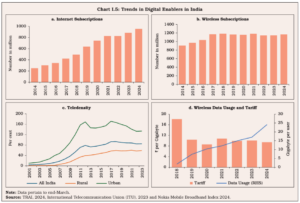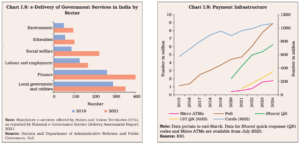
The Unified Payments Interface has undeniably revolutionised financial transactions in India, fostering a cashless economy and bringing unparalleled convenience, security, and efficiency to financial transactions. However, while UPI offers these substantial benefits, it has also inadvertently encouraged impulsive spending among users.
According to data from the National Payments Corporation of India (NPCI), Unified Payments Interface saw a 45% year-on-year (YoY) growth in transaction volume in July, reaching 14.44 billion transactions. The value of these transactions surged by 35% YoY, totalling Rs 20.64 trillion. This marks the third consecutive month that transaction values exceeded Rs 20 trillion, reflecting UPI’s dominant role in India’s digital payment ecosystem. The Reserve Bank of India’s (RBI) noted a tenfold increase in Unified Payments Interface transaction volume over the past four years, from 12.5 billion in 2019-20 to 131 billion in 2023-24.
READ I AI: India’s next frontier or fatal flaw?
Flip side of UPI convenience
While Unified Payments Interface’s ease of use and accessibility have been pivotal in its widespread adoption, this convenience has a downside. The RBI’s Report on Currency and Finance (RCF) for 2023-24 highlighted that digitalisation, while improving financial service accessibility, can lead to impulsive spending. Digital platforms enable quick dissemination of financial trends and choices, often resulting in herd behaviour. When large groups engage in financial activities, such as mass buying or selling during market frenzies, others tend to follow suit.


A study by Harshal Dev, Raj Gupta, and Dhruv Kumar explored UPI’s impact on individual spending behaviour. The study found that approximately 75% of respondents reported increased spending due to UPI, with only 7% indicating reduced spending. This increased spending can be attributed to the psychological shift from physical cash to digital transactions. Physical cash provides a tangible connection to money, often leading to more mindful spending. In contrast, digital transactions via UPI feel like mere numbers on a screen, reducing the perceived value of money and leading to impulsive purchases.
Data breach concerns
Despite Unified Payments Interface’s robust security measures, the RBI report raised concerns about data breaches and cybersecurity. The average cost of data breaches in India stood at $2.18 million in 2023, with phishing and stolen credentials being the most common attacks. While these figures are less than the global average, they highlight the vulnerabilities that come with digital transactions. Ensuring data security and protecting users from fraud remains a critical challenge as Unified Payments Interface continues to grow.
Interestingly, the same study revealed that 91.5% of respondents were satisfied with their UPI usage, and 95.2% found it convenient for making payments. However, many users reported that the ease of UPI led to overspending. About 59.8% acknowledged that Unified Payments Interface usage resulted in budget exceedances, while 23% strongly agreed that Unified Payments Interface impacted their ability to stick to a budget.
Ways to responsible usage
To mitigate impulsive spending and enhance responsible financial management, several recommendations have emerged from user feedback and research. Unified Payments Interface applications should integrate features that allow users to set spending limits and receive alerts when approaching these limits. This can help users stay within their budgets and avoid overspending. Additionally, integrating visualisation tools like graphical representations and pie charts in Unified Payments Interface apps can help users better understand their spending patterns, providing insights into where money is being spent and highlighting areas where users can cut back.
UPI platforms should also offer educational content on financial management, including tips on budgeting, saving, and making informed financial decisions. This can help users develop better spending habits. Continuous improvements in security protocols are essential to protect users from data breaches and fraud. Users should be educated on safe practices, such as not sharing sensitive information and enabling two-factor authentication. Recognising that different user groups have varying financial needs, Unified Payments Interface apps should offer customised solutions for professionals, students, and business owners, ensuring that the platform remains relevant and useful for all demographics.
UPI has transformed India’s financial landscape, offering unmatched convenience, security, and efficiency. However, the rise in impulsive spending due to digital transactions necessitates a balanced approach to ensure that the benefits of Unified Payments Interface do not come at the cost of financial discipline. By integrating robust budgeting features, visualisation tools, financial education, and enhanced security measures, Unified Payments Interface can continue to thrive while promoting responsible spending habits. As digital payments become increasingly integral to modern life, it is crucial to harness their potential for economic growth while safeguarding users’ financial well-being.
